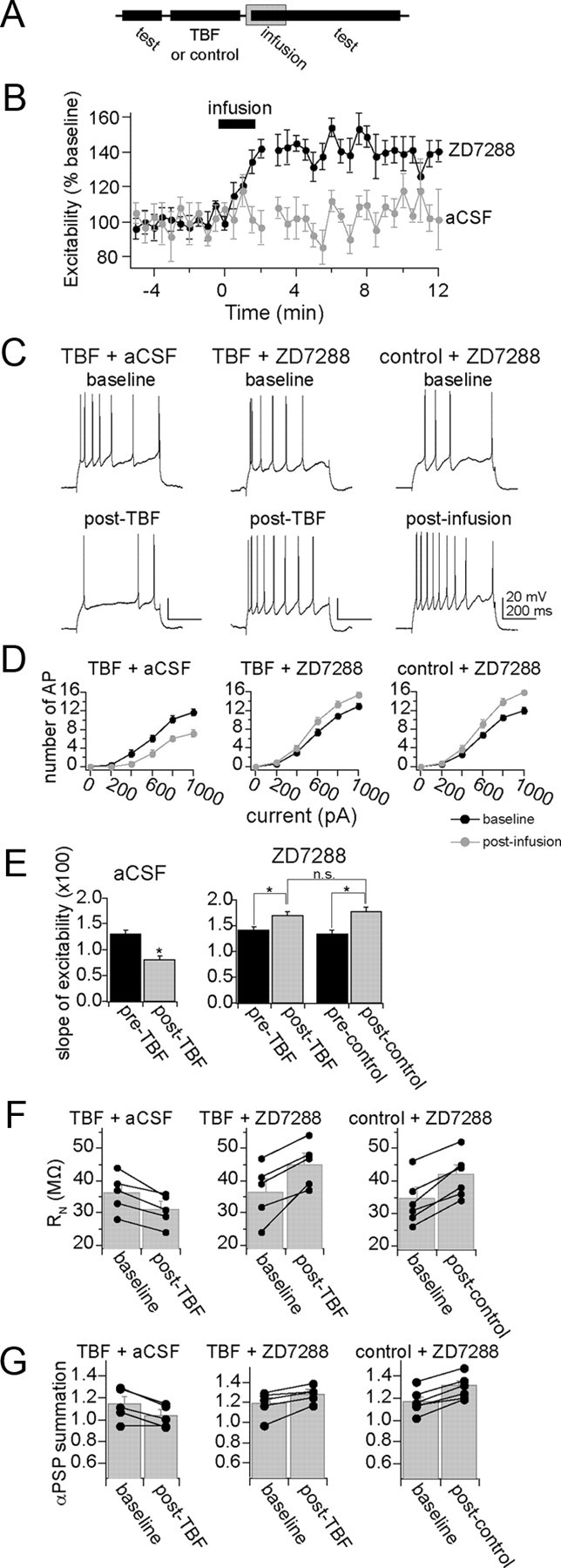Figure 8.

Blockade of h channels disrupts the expression of plasticity of membrane properties. A, A procedure was designed to specifically test the role of h channels in the expression, not induction, of membrane plasticity caused by TBF. In this design, membrane properties are tested, followed by the TBF (or control) activity. This is immediately followed by local infusion of ZD7288 or aCSF. During and following this infusion, membrane properties are tested again. B, Infusion of ZD7288, but not aCSF vehicle, caused an increase of membrane excitability. C, TBF caused a decrease of membrane excitability, even after aCSF infusion (left panel). However, the decreased excitability caused by TBF is reversed by local infusion of ZD7288 (middle panel). ZD7288 also causes increased excitability when it follows a control period (right panel, as in B). D, The effects on membrane excitability are observed over a range of current step amplitudes (0–1000 pA). E, To further quantify the impact of membrane excitability, the slope of the input–output relationship was measured (“slope of excitability”). As above, TBF caused a reduction of membrane excitability when aCSF was infused. The effect of TBF on excitability was reversed by ZD7288. Importantly, the final slope of the input-output relationship was similar after ZD7288 in both the control and the TBF group (right). F, Infusion of ZD7288 reversed the effects of TBF on Rn, such that the final value was similar to Rn values following ZD7288 infusion after a control procedure. G, Infusion of ZD7288 reversed the effects of TBF on summation of αPSPs, such that the final value was similar to αPSPs values following ZD7288 infusion after a control procedure.
